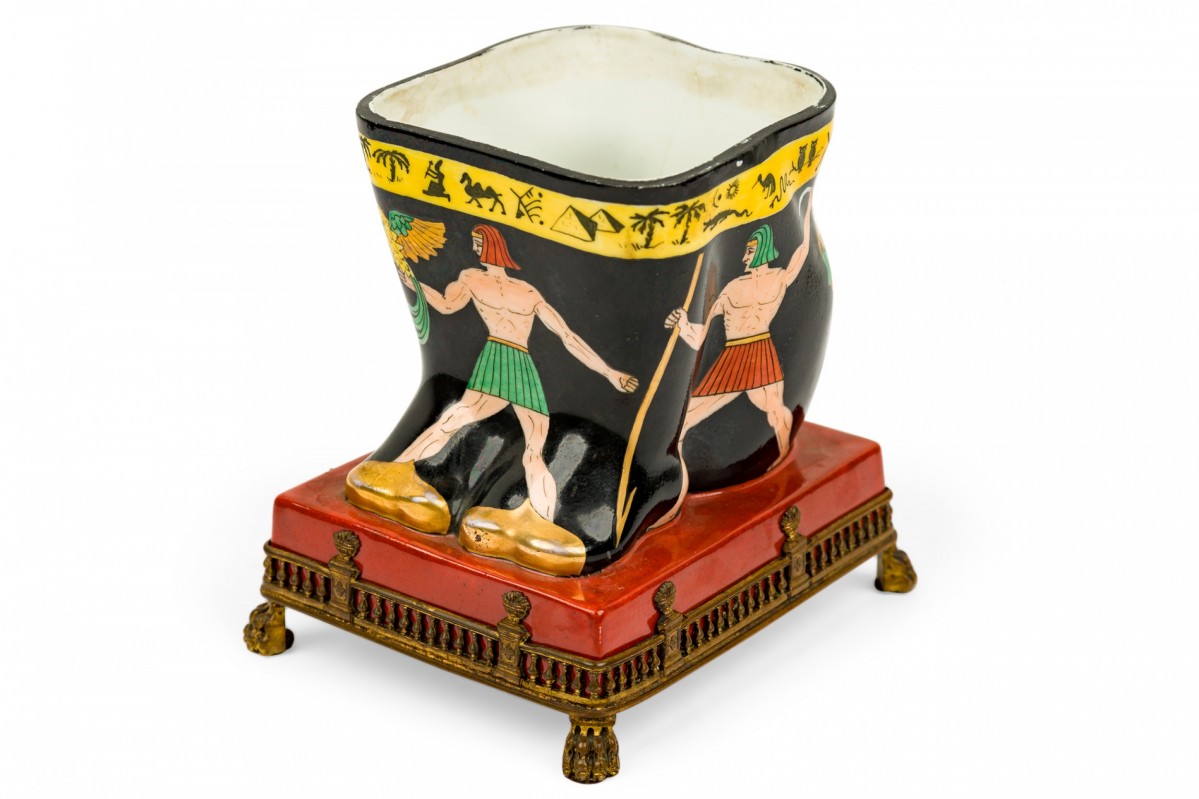X
{{ modalTitle }}
PLEASE FILL IN THE REQUIRED FIELDS.X
X
{{ modalTitle }}
Choose one of the options below.X
ITEM SUCCESSFULLY
ADDED TO PROJECT
French Porcelain Sarcophagus-Shaped Vase
 French
French Victorian
Victorian Accessories/Décor/Bric-a-Brac
Accessories/Décor/Bric-a-Brac Vases/Urns
Vases/Urns
Newel Warehouse
32-00 Skillman Ave
Long Island City NY - 11101
 (212) 758-1970
(212) 758-1970
French Porcelain Sarcophagus-Shaped Vase

Newel Warehouse
32-00 Skillman Ave
Long Island City NY - 11101
 (212) 758-1970
(212) 758-1970
 Accessories/Décor/Bric-a-Brac
Accessories/Décor/Bric-a-Brac Vases/Urns
Vases/UrnsVictorian
Period in English furniture during the reign of Queen Victoria 1837-1901. Consists of a resurrection of many previous periods and revival imitations including: Gothic, Tudor, Elizabethan, Rococo, and Neoclassic style. This period had a focus on dark woods, heavy fabrics, embellishment, engagement with newly developed imitation materials that were facilitated by the Industrial Revolution, and a tendency towards eclecticism.
Filigree
Primarily refers to fine, ornate metalwork (mainly in gold, silver, or copper), that is intricately patterned and used as ornamentation or embellishment, particularly in fine jewelry making. More broadly, the term can refer to any ornamental openwork that is delicate or fine that resembles a metal filigree in its pattern, but in other mediums.
Porcelain
Porcelain is a hard, non-porous pottery. Porcelain is white, has a fine-grained body and usually translucent. Porcelain differs from earthenware in that earthenware is porous, opaque and coarse. True porcelain is made of kaolin or china clay.
Sarcophagus
A sarcophagus is a rectangular, coffin-shaped box tapering to a smaller size at the bottom that was used to bury leaders and weather residents in ancient Egypt, Rome and Greece. Sarcophagi were typically made of stone or clay, were elaborately decorated with carvings or paintings, and displayed above ground.
Victorian
Period in English furniture during the reign of Queen Victoria 1837-1901. Consists of a resurrection of many previous periods and revival imitations including: Gothic, Tudor, Elizabethan, Rococo, and Neoclassic style. This period had a focus on dark woods, heavy fabrics, embellishment, engagement with newly developed imitation materials that were facilitated by the Industrial Revolution, and a tendency towards eclecticism.
Filigree
Primarily refers to fine, ornate metalwork (mainly in gold, silver, or copper), that is intricately patterned and used as ornamentation or embellishment, particularly in fine jewelry making. More broadly, the term can refer to any ornamental openwork that is delicate or fine that resembles a metal filigree in its pattern, but in other mediums.
Porcelain
Porcelain is a hard, non-porous pottery. Porcelain is white, has a fine-grained body and usually translucent. Porcelain differs from earthenware in that earthenware is porous, opaque and coarse. True porcelain is made of kaolin or china clay.
Sarcophagus
A sarcophagus is a rectangular, coffin-shaped box tapering to a smaller size at the bottom that was used to bury leaders and weather residents in ancient Egypt, Rome and Greece. Sarcophagi were typically made of stone or clay, were elaborately decorated with carvings or paintings, and displayed above ground.
Victorian
Period in English furniture during the reign of Queen Victoria 1837-1901. Consists of a resurrection of many previous periods and revival imitations including: Gothic, Tudor, Elizabethan, Rococo, and Neoclassic style. This period had a focus on dark woods, heavy fabrics, embellishment, engagement with newly developed imitation materials that were facilitated by the Industrial Revolution, and a tendency towards eclecticism.
Filigree
Primarily refers to fine, ornate metalwork (mainly in gold, silver, or copper), that is intricately patterned and used as ornamentation or embellishment, particularly in fine jewelry making. More broadly, the term can refer to any ornamental openwork that is delicate or fine that resembles a metal filigree in its pattern, but in other mediums.
Porcelain
Porcelain is a hard, non-porous pottery. Porcelain is white, has a fine-grained body and usually translucent. Porcelain differs from earthenware in that earthenware is porous, opaque and coarse. True porcelain is made of kaolin or china clay.
Sarcophagus
A sarcophagus is a rectangular, coffin-shaped box tapering to a smaller size at the bottom that was used to bury leaders and weather residents in ancient Egypt, Rome and Greece. Sarcophagi were typically made of stone or clay, were elaborately decorated with carvings or paintings, and displayed above ground.

















